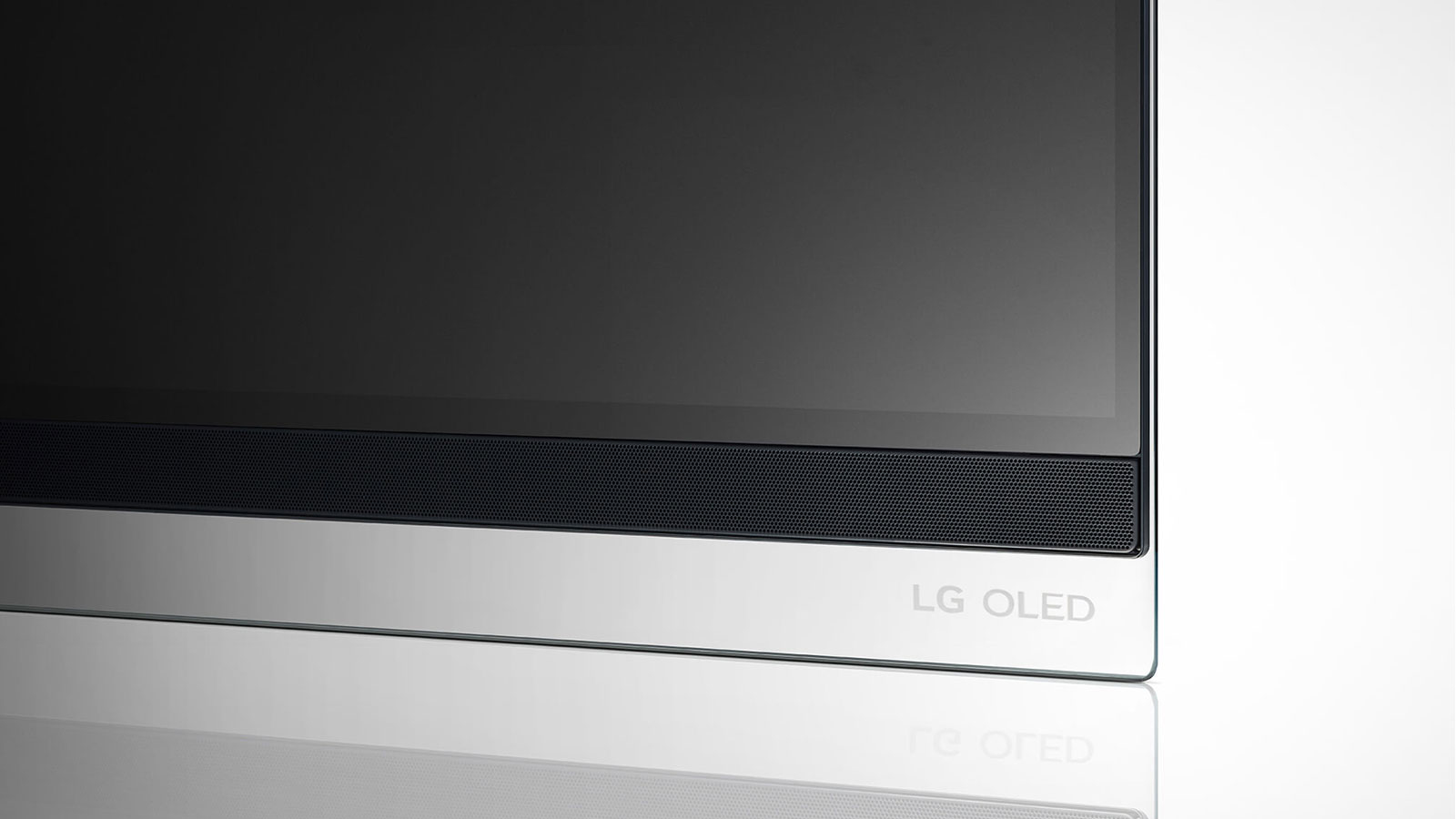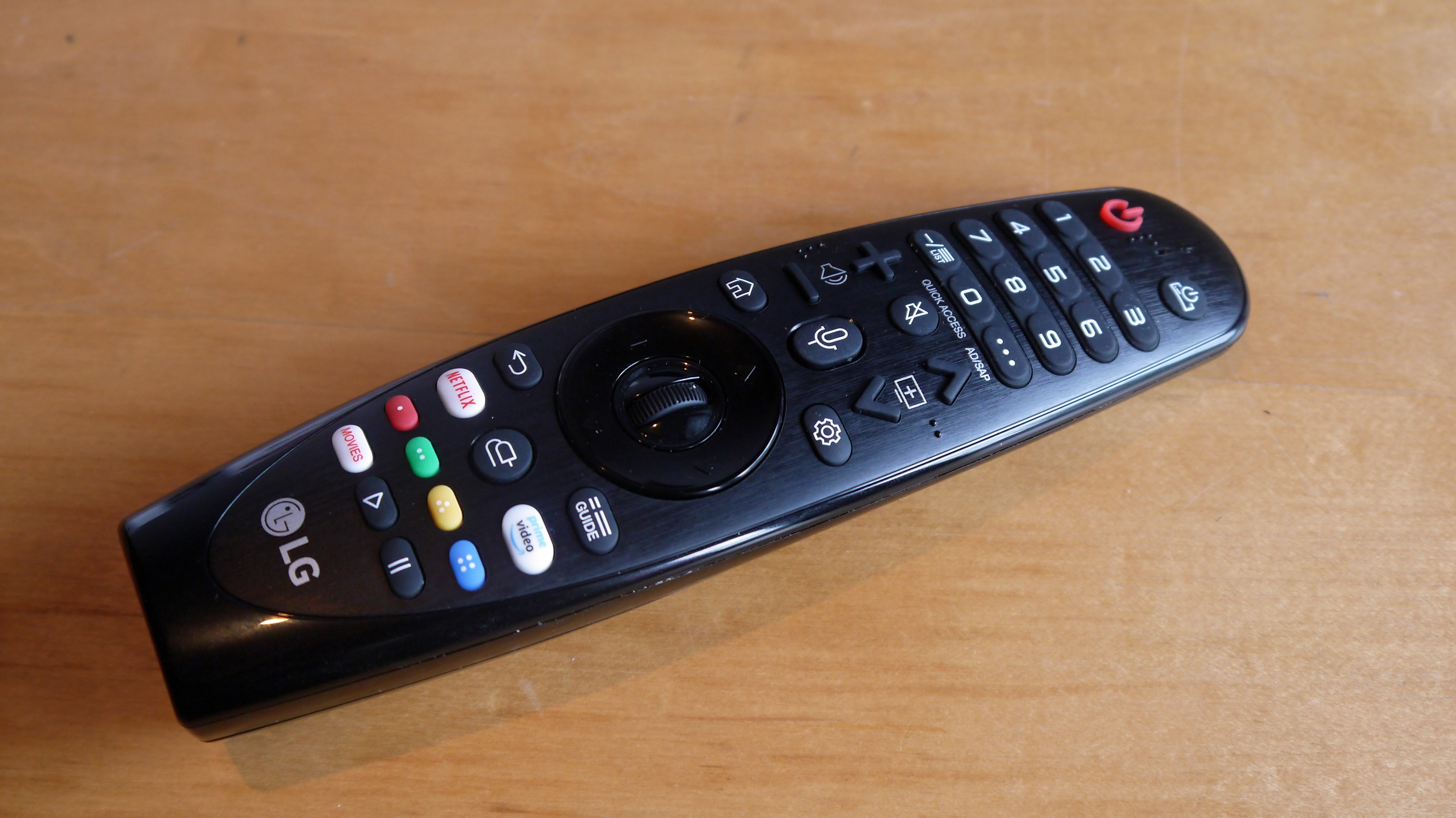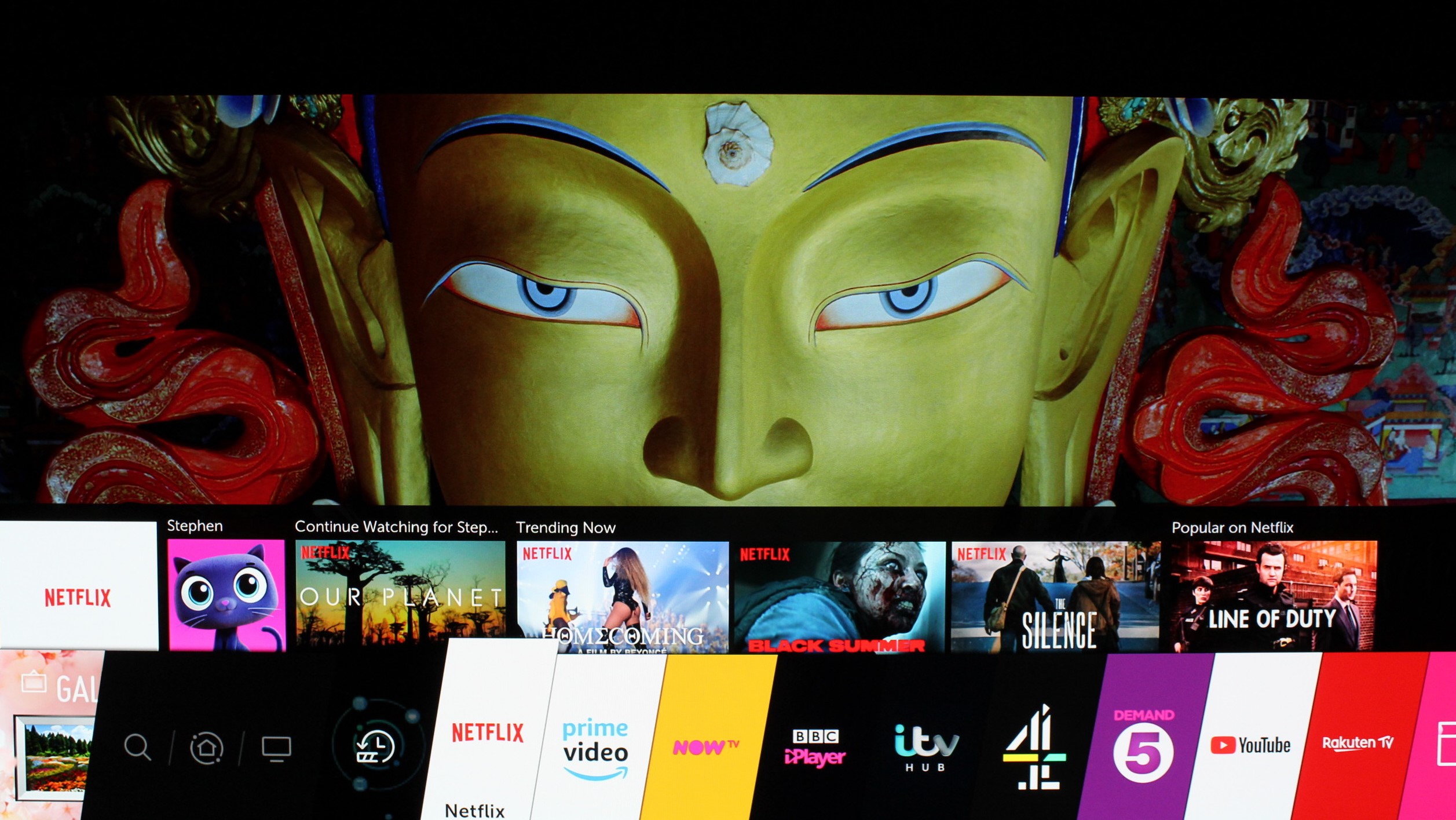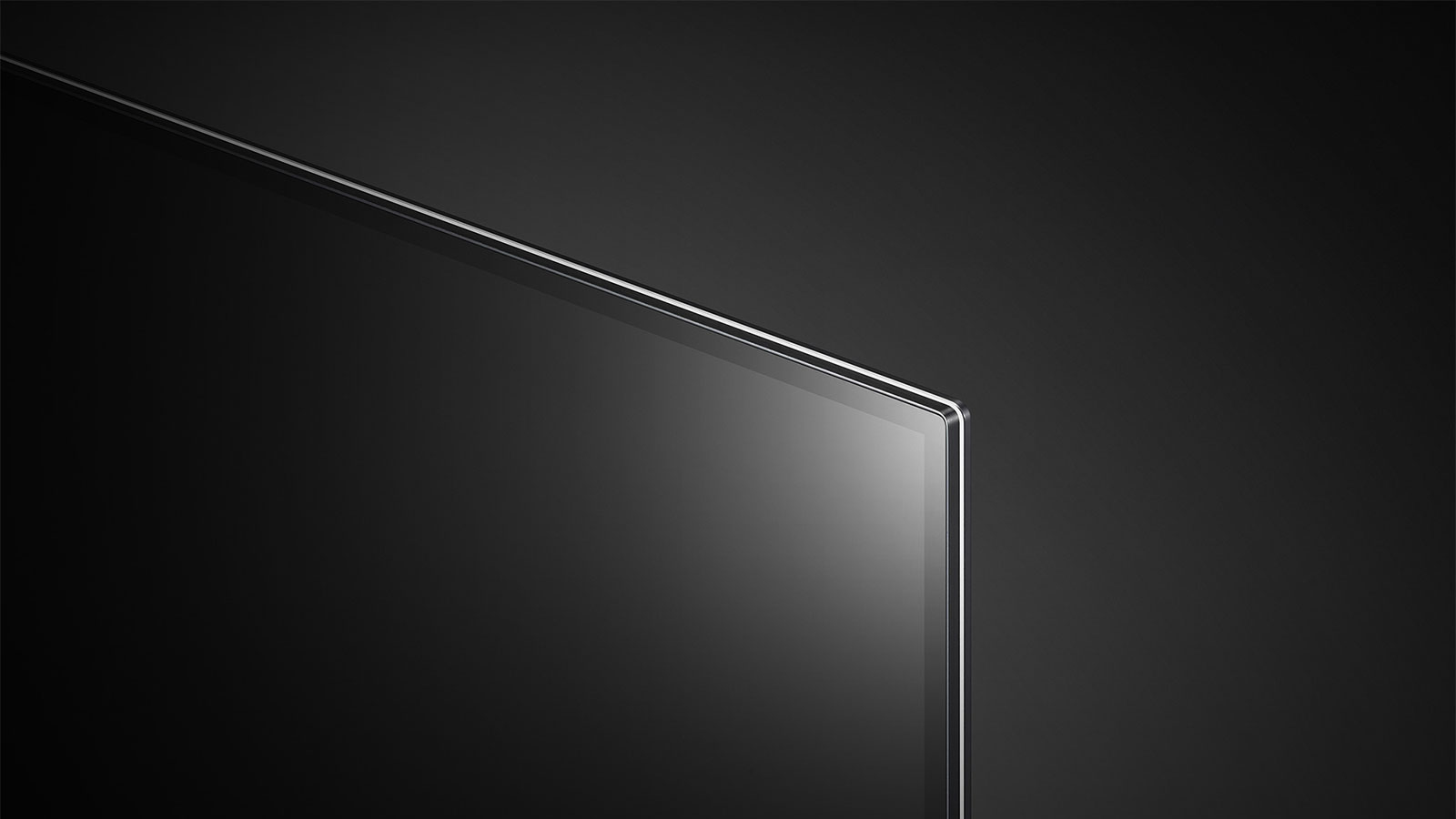TechRadar Verdict
LG’s E9 OLED has incredible picture quality, helped by a new a9 Gen 2 processor and OLED-level contrast, with 4.2 channel speakers bringing real depth to its built-in speakers. The lack of HDR10+ and the patchy Bluetooth connection are minor let-downs compared to how much the E9 gets right.
Pros
- +
Incredible picture quality
- +
Glass panel design
- +
4.2 channel speakers
- +
Dolby Vision, Dolby Atmos
Cons
- -
No HDR10+
- -
Low brightness
- -
Patchy Bluetooth for headphones
Why you can trust TechRadar
The LG E9 OLED walks a fine line between mid-range excellence and premium knockout. LG Display is investing hard in its OLED TV production, and while prices have yet to drop to broadly affordable levels – you can see the damage in the pricing section below – the sets offer some of the best picture quality on the market.
This was all true last year as well. Those after the very best and latest OLEDs will rightly be looking to the 2019 LG TV range of which the E9 is one of the flagship models, although if you bought one of LG’s OLEDs in 2018 you won’t be looking at much in the way of technical improvements or design overhauls.
That's not to talk down the E9 reviewed here: you get an amazing picture, and while it doesn’t boast the 8K resolution of LG’s Z9 OLED, or the wafer-thin panel of the LG Signature Series W8, its stylish looks and impressive display make it too good to be considered a second-tier OLED.
- What are the best OLED TVs?
LG E9 OLED price and release date
The LG E9 OLED price starts at $3,299 / £2,799 (about AU$4,600) for the 55-inch model reviewed here, going up to $4,299 / £3,499 (about AU$6,050) for the 65-inch model. Both sizes are available in the UK at John Lewis, Currys, and elsewhere, while a US release is planned for June.

Design
The E9’s main differentiator from the rest of LG's OLED range is its build – it has a sleek glass panel instead of a traditional boxed display. The rest of the internal hardware, and the weighty stand, sit behind this out of sight, giving you an unspoiled view of your TV screen – you won’t even see an LG logo at the base of the screen, and the only sign that the TV is plugged in is a dim red glow along the edge of the glass, which switches off as the display powers up.
The set measures 1226 x 753 x 50mm by itself, with that last figure changing to 220mm if you include the stand. The smart build of the E9 creates the impression of an untethered, floating screen: effectively the W9 ‘wallpaper’ model but sitting on a counter (or a shelf, as in the main image above) rather than hanging on a wall.
This ‘out of sight, out of mind’ design approach extends to the ports and inputs. There are two USB ports and one HDMI in the rear, although you can also remove a panel on one side of the TV to reveal two more USB ports and three more HDMIs. All the ports are the latest HDMI 2.1 standard – not a necessity with 4K TVs on the whole, but ideal for gamers wanting to get 120fps out of their 4K-ready games, or those wanting high-bandwidth ports to future-proof in readiness for more demanding content down the line.
Sign up for breaking news, reviews, opinion, top tech deals, and more.

There’s also a CI slot, Ethernet port, HDMI ARC (for sending TV audio to soundbars), and options for using wired or wireless headphones. Be warned though: we found the Bluetooth 5.0 connection with the E9 to be surprisingly patchy, so we wouldn’t recommend this set if you like to watch movies with your Bose QuietComfort 35s instead of the TV’s internal speakers.
You get LG’s Magic Remote with the set, and it's a sleek and ergonomic shape that should fit naturally into your hand. It comes with dedicated Netflix and Amazon Prime Video buttons, large + and – buttons for changing the volume, and a central scroller you can use to move through and select menus – though you can also point and click, and we found Magic Remote’s sensor very accurate throughout our testing.
TL;DR A gorgeous glass panel design make the E9 a treat for the eyes – even when it’s off. Just a shame about the patchy Bluetooth connection.

Smart TV (webOS with ThinQ AI)
The E9 OLED sports the latest webOS 4.5 smart TV platform, which offers a few neat improvements on last year’s software and is on all of LG’s new OLED and NanoCell televisions.
WebOS uses a sleek horizontal menu to show you all your apps and services on the dashboard, from YouTube and Rakuten TV to Netflix and Amazon Prime – but v4.5 also brings up a secondary menu above when you hover over an app. Pointing at Netflix or Hulu? It will bring up shows you’ve been watching or might wish to start, making jumping into your chosen content that little bit quicker.
There’s also now a Home Dashboard for viewing all your connected smart home devices in one place. The LG E9 uses Google Assistant for voice control, and works in tandem with Google Home devices, Apple HomePod, and – new for this year – Amazon Alexa devices. We got the E9 set up with our Amazon Echo Plus, and were soon happily using Alexa to power the TV on and off and change the volume.
Alexa isn’t integrated throughout the set, however, so good luck trying to use it to open a specific app or search for a title without a Fire TV device plugged in.
TL;DR A smooth interface for one of the best smart TV platforms out there.

HD/SDR performance
One of the recurring issues with watching HD content on 4K televisions is that you need decent picture processing to enlarge the image without it seeming too artificial. The E9’s OLED panel, however, is fully at home with HD content, with the precise pixel control to bring out only the level of detail needed.
Watching the opening episode of Stranger Things (SDR) on OLED was a revelation, with the picture drawing out the moody shadows of the Hawkins forest as clearly as the vibrant reds and yellows of kids’ backpacks and T-shirts. The ability of OLED panels to 'turn off' individual pixels makes for incredibly deep blacks, and startling levels of color contrast, and the gains are obvious to the eye. This is a television made for atmosphere, and even regular SDR images enjoy a real boost to the colors on-screen.
LG has also packed in a feature called HDR Pro (listed as HDR Effect in your settings), which tries to enhance SDR images to make use of the panel’s expanded color gamut; the effect isn’t particularly natural, however, especially compared to the other picture settings available.

LG’s ThinQ AI will actively adjust the set’s processing algorithm depending on the kind of content you’re watching – horror, sitcoms, news broadcasts, and the like – and generally does a wonderful job of tailoring the E9’s output to what’s being shown. (For the best results, do check out the picture settings: Standard will do just fine, but you’ll want Cinema for proper movie nights, or Game for low input lag during gaming sessions.)
For a high-end television that's so clearly designed for cinematic nights in, you might be forgiven for thinking it wouldn’t also excel as a gaming TV. But the E9 plays demanding games effortlessly, with that extra level of depth and detail in the panel creating staggering visuals in 3D environments: loading up Breath of the Wild on Nintendo Switch was simply astonishing, even with the console’s HD restriction, adding a real fullness and vibrance to the game’s cel-shaded character models.
TL;DR As ever, LG’s OLED panels bring a sense of cinema to the small screen, with incredible black levels and rich, vibrant colors.
4K/HDR performance
If you’re buying a 4K TV you’re probably planning to watch some 4K content – and we can assure you that the E9 OLED does not disappoint here.
We slipped in a disc for Guillermo Del Toro’s The Shape of Water, and while a 55-inch TV doesn’t quite match a cinema screen for scale, the effect isn’t far off. The all-glass, frameless panel has an open and expansive air, while the HDR (high dynamic range) gives a gorgeous glint of emerald to the film’s ongoing aquatic greens.
Especially in bright environments – say, a well-lit living room in the afternoon – the extra details afforded by 4K can be harder to pick out. OLED panels have a dim output compared to LEDs or QLEDs (only 700-900 nits), and are most at home in a darkened room where they’re not fighting against other light sources.
So The Shape of Water’s blacks could dominate the screen at times, but the richness of the color palette seems fully worth it – just turn off the lights and pull down the blinds to make the most of the experience.

There’s an increasingly wide selection of Ultra HD content available on streaming services like Netflix, as well as plenty of 4K Blu-rays to enable you to enjoy that quality picture without relying on an internet connection. The LG E9 packs in almost all of the premium video formats you could hope for: 12-bit Dolby Vision, HDR10, and HLG (Hybrid Log Gamma) are all here.
Sadly, though, 10-bit HDR10+ doesn’t make the cut, despite being included in high-end sets from the likes of Samsung and Panasonic. But it’s a small let-down compared to the dazzling visuals and wide format support the E9 provides.
TL;DR Nothing matches OLED for a rich color palette, even if it doesn’t have the brightness to truly illuminate the screen.
Sound
If the glass design of the E9 hasn’t won you over, you may be wondering why you wouldn’t settle for the C9 OLED instead, which features essentially the same panel and internal processor. When it comes to audio, however, the E9 has the advantage.
The E9 OLED features 4.2 channel speakers (60W) all built into the television, giving an astonishing level of audio separation for internal TV speakers. We watched Bong Joon-ho’s Okja on Netflix, and hearing the chaos of Seoul’s busy intersections drift from one side of the set to the other was nothing short of magical – and we felt a clear incentive to upgrade from the C9’s 2.2 channel speakers (40W).
The E9’s speakers are all front-firing for maximum impact, and the set supports Dolby Atmos’ surround sound format.

Other panels to consider
The E9 is a fantastic television, but LG’s other OLEDs all offer something slightly different. The C9 OLED is the next set down in the range, and starts at a slightly more affordable $2,499 / £2,499 (about AU$3,500). The B9 is even cheaper, though you’re getting last year’s processor instead of the a9 Gen 2.
At the other end of the spectrum is Samsung’s QLED TV range, which offer much brighter displays than LG’s OLEDs, even if they lag behind on color contrast and black levels. You can read our full OLED vs QLED guide to learn about the differences, but possibly the most important thing to note is that Samsung TVs will generally be cheaper.
Final verdict
The LG E9 OLED offers a dazzling picture, with crisp detail and truly cinematic visuals. LG’s organic LED displays lack the brightness of competing models, but those after a proper movie night in won’t be disappointed.
The E9 differs mostly from other LG OLEDs in its shape and its size options – both the more premium W9 and cheaper C9 offer a larger 77-inch model – but we’d be surprised if the E9’s all-glass panel design didn’t impress you. With a unique look, and the multi-channel audio to elevate it above other OLED sets in the range, the E9 is a fantastic addition to any living room.
- LG TV 2019: every LG TV coming this year
- Check out our list of available LG promo codes for this month's best discounts.

Henry is a freelance technology journalist, and former News & Features Editor for TechRadar, where he specialized in home entertainment gadgets such as TVs, projectors, soundbars, and smart speakers. Other bylines include Edge, T3, iMore, GamesRadar, NBC News, Healthline, and The Times.
